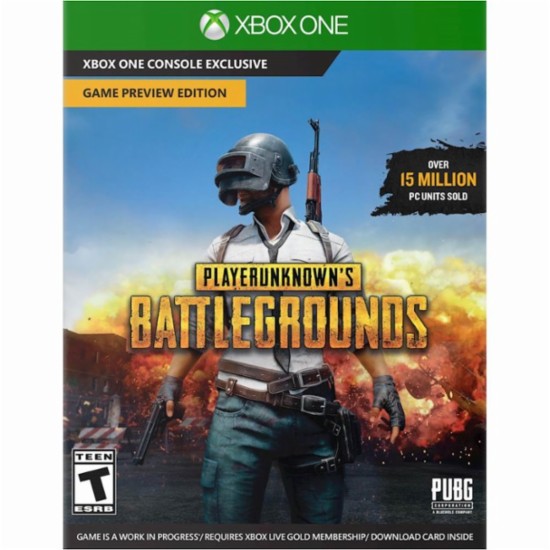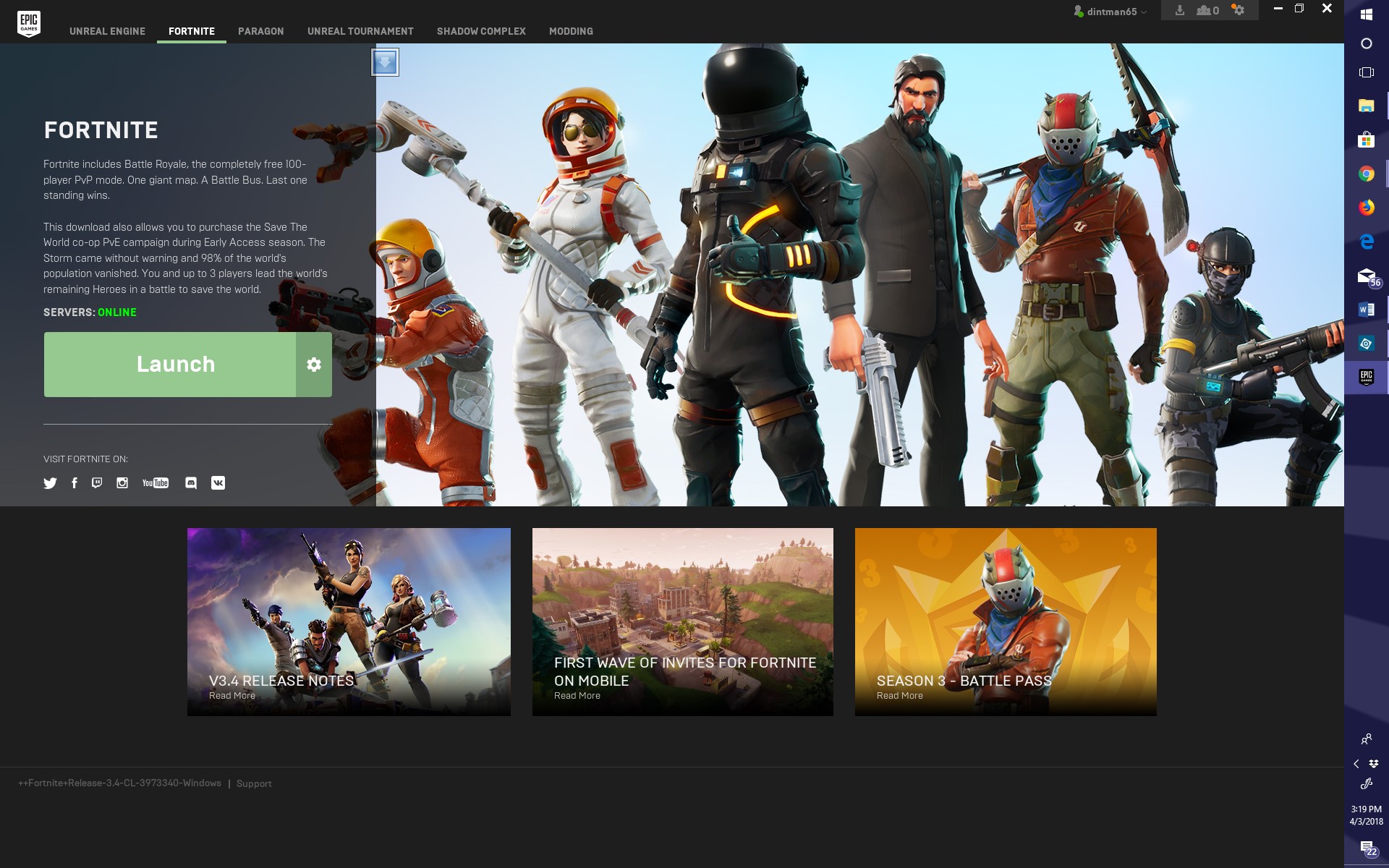How Fortnite Drives the Battle Royale Genre to New Heights
One of the biggest stories in video games over the past year has been the rise of the battle royale genre. In 2017, we saw the unprecedented rise of two major games in this genre, PlayerUnknown’s Battlegrounds (PUBG) and Fortnite. In the wild world of early access PC games, both products had millions of users before they officially released. With PUBG, the game had already peaked by the time it was formally launched in December 2017. Fortnite Battle Royale, which had a surprise September launch, soon surpassed PUBG. While dozens of battle royale games will soon be hitting the market, Fortnite is looking to solidify its position as the number one game in this genre.
For DFC’s end of 2017 top PC game report, both Fortnite and PUBG soared to the top. This was exciting news for the PC game industry, because, with the exception of Overwatch in 2016, most of the top PC games were older titles like League of Legends. This category is rejuvenating interest in PC games and introducing a new audience to eSports.
History of Battle Royale Genre
Battle Royale was a 2000 Japanese movie about a group of school students whom the government put on an island where they were forced to fight to the death. As a sidenote, it was the final film from Japan’s popular director Kinji Fukasaku, whose films we predict may be rediscovered as an inspiration for future video games. Of course, the Hunger Games would probably be the biggest license for a battle royale game.
The battle royale genre emerged from mods to existing games, where they were seen as an extra online feature. Minecraft’s Survival Mode was a prime example. Another was DayZ Battle Royale created by Brendan Greene, lead designer of PUBG. Greene was hired by South Korean publisher Bluehole to develop what became PlayerUnknown’s Battlegrounds.
Rise of PlayerUnknown’s Battlegrounds
In 2017, PlayerUnknown’s Battlegrounds took the battle royale concept to an entire standalone game that took the world by storm. In PUBG, players are launched onto a map where they must find equipment and weapons and try and win by killing everyone else. Each match can support up to 100 players working either solo or in teams of up to 4.
PUBG, launched on Steam early access at a price of $30. This seemed like a steep price for what seemed to be an Asian style free-to-play game. However, by the time the full game launched in December 2017, PUBG had already sold over 20 million copies. By March that figure had passed the 30 million mark.
The bad news for PUBG, was that by the time it formally launched, it had already been overtaken by a new title, Fortnite. Bluehole’s goal was to develop a title that would resonate with a Western audience. In that they clearly succeeded. However, with Fortnite they were competing directly with Epic Games, a U.S. based developer that definitely knows the Western audience. After playing both titles it is our opinion that Fortnite is simply the more mass-market product.
Fortnite Gets a Battle Royale Mode
The tricky thing with Fortnite Battle Royale is it is hard to say it is an actual game. Epic Games had been developing Fortnite since 2011, and it was originally scheduled for launch in 2013. Its troubled development history had it looking like another in a long line of zombie survival games. The game had been in testing for years and going into 2017, it was looking to launch as a free-to-play title. The problem was Epic, like most Western publishers, was not coming from the games as a service background that is generally a prerequisite for a successful free-to-play title.
Epic Games is perhaps best known for their Unreal Engine. This game engine has been licensed to many developers and is used in many popular games, including PlayerUnknown’s Battlegrounds. (For an analysis of the most popular game engines see the new DFC report on PC Game Engines). In 2012, Chinese internet/game giant Tencent had acquired a large minority stake in Epic and the goal was to bring the games as a service model to the Unreal Engine.
Obviously, Fortnite had the advantage of being started as a pioneer game for the Unreal Engine 4. What Fortnite lacked was something that made it standout from the competition. With the success of PUBG, Epic realized that with a few tweaks, Fortnite could become the most polished battle royale game in a short period of time. This was a case where a game engine can allow a company to quickly capitalize on current trends.
Fortnite Versus PUBG
As mentioned, it is our opinion that Fortnite Battle Royale is a more mass-market game than PUBG or others in the battle royale genre. This does not necessarily mean it is a better game. In its year-end list of top games for 2017, Eurogamer had PUBG at number 4, while Fortnite was way down at number 32. However, going into 2018 Fortnite was gaining users, many of them seeming to come from PUBG.
Fortnite features cartoony graphics and a third-person perspective, versus PUBG’s more realistic look and first-person perspective. In this respect, Fortnite is considered the more “casual” game. The reality is battle royale is simply not a casual genre of game by its very nature. The whole concept is trying to be the sole survivor out of dozens of competitors. These are tough competitive games, where even experienced players will die over and over.
For less experienced players, the third-person perspective can be a little more user friendly. PUBG is simply a more intense experience with larger maps, longer play times and complex weapons and items. For heavy duty, experienced shooting game fans, PUBG probably fits the bill. However, for the much larger base of more “casual” action game fans, Fortnite is the better choice. This is similar to how Electronic Arts’ 2015 FPS Star Wars Battlefront had much better than expected sales despite being looked down on by serious fans of the genre. Like Fortnite, Star Wars Battlefront made a sophisticated genre more user friendly.
Fortnite also has a building mode where players can cut trees and rocks to get building resources. This goes right to the massive Minecraft audience that enjoys building as much as fighting. Fortnite also reaches a console audience with free versions for the PlayStation 4 and Xbox One. PUBG is only available for the much less popular Xbox One, but it costs $30 and its performance has been criticized relative to the PC version.

Of course, there are also the business model considerations. PUBG costs $30 while Fortnite’s battle royale mode is free. There is some confusion with Fortnite, as originally the game was an entirely different beast. Epic did launch a $40 standard version and a $60 deluxe version that featured the original player versus environment survival mode. However, these versions do not appear to be actively marketed and when people speak of Fortnite, it is generally about the free player versus player battle royale version.
Fortnite is a true F2P games as a service model where the goal is to build an audience and worry about monetization down the road. Unlike PUBG, there is little grinding for loot crates in Fortnite. Epic has released a Battle Pass system, but it is entirely optional and not necessary to the game’s enjoyment. Fortnite has game seasons that last 10 weeks. For $10, users can buy a Premium season Battle Pass. This Battle Pass gives cosmetic rewards for leveling up and completing quests. Each season users can go up to 100 tiers. Users that don’t buy a Battle Pass can also level up but the rewards are not as interesting.
Battle Royale Genre: Going to New Markets
In Western markets, gamers have had a somewhat negative reaction to many free-to-play mechanics such as loot boxes and paying for performance enhancing items. PUBG is more about grinding for loot crates and that could make it more popular in Asian markets. Like many of these games, PUBG has been ruined for many people by excessive hacking and cheating. The game is being launched in China by Tencent, but the Chinese government is not happy about the battle royale genre in general. It is only the power of Tencent that has allowed PUBG to launch under closely monitored conditions. Other battle royale games will likely face a tough road in China.
Outside of China, Fortnite looks to be the clear winner. PUBG was the innovator, but Fortnite polished the game concept for the masses. There are all kinds of ways Epic can go from this point, but we expect Fortnite to become a huge cross-platform franchise that should last for years. Meanwhile, we expect PUBG to settle into a smaller, but still successful, core niche audience.
The next frontier for these games is on mobile devices. Going into March 2018, both games were in fairly early launch for Android and iOS devices. PUBG is ahead on the mobile front, while Fortnite is in invite testing for iOS. Epic has limited experience in mobile games, so it appears in this respect PUBG has a major advantage. However, there have already been reports about hackers ruining the mobile PUBG experience.
At DFC Intelligence our game forecasting service tries to predict which games will be hot in coming months. Frankly the success of Fortnite, which we had watched for years took us by surprise. It is a sign that, while mobile devices have the greatest penetration, the core PC and console audience of over 300 million consumers worldwide is large enough to drive major overnight success.
The ability to quickly copy a successful game like PUBG is something most companies will probably not be able to emulate. With Fortnite, Epic apparently turned on a dime to create what became a bigger product than the original. We expect dozens of battle royale games to launch in coming months, but it will be hard to compete with the two big kids.



